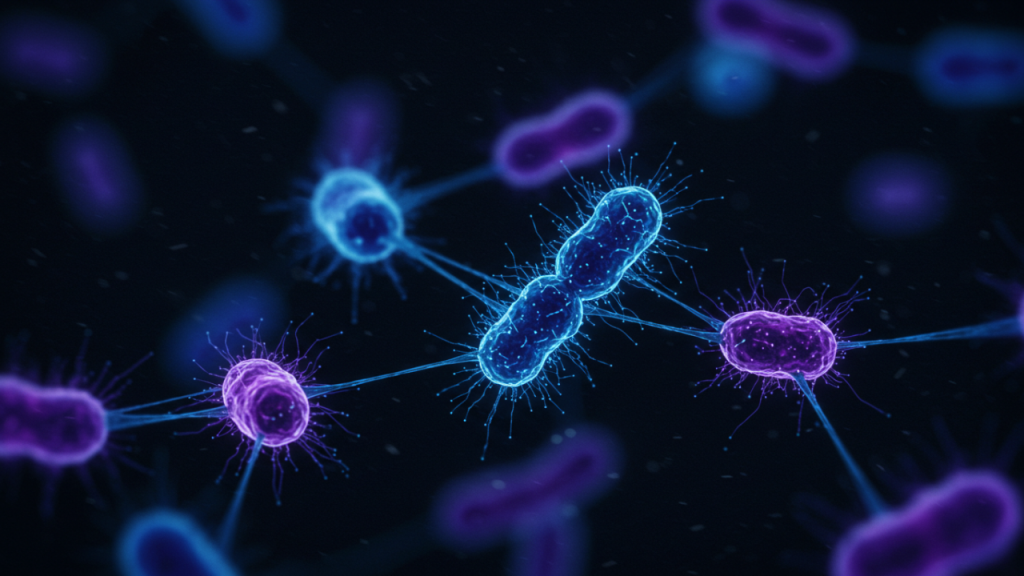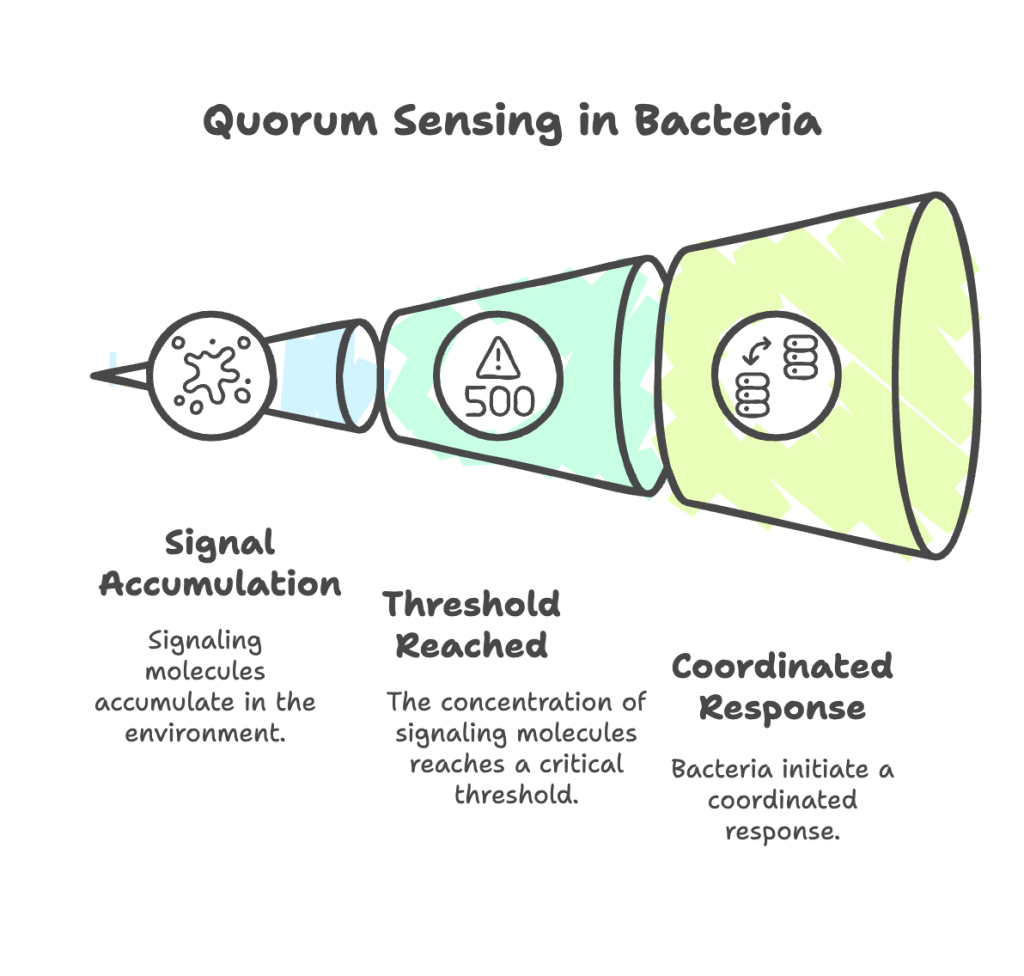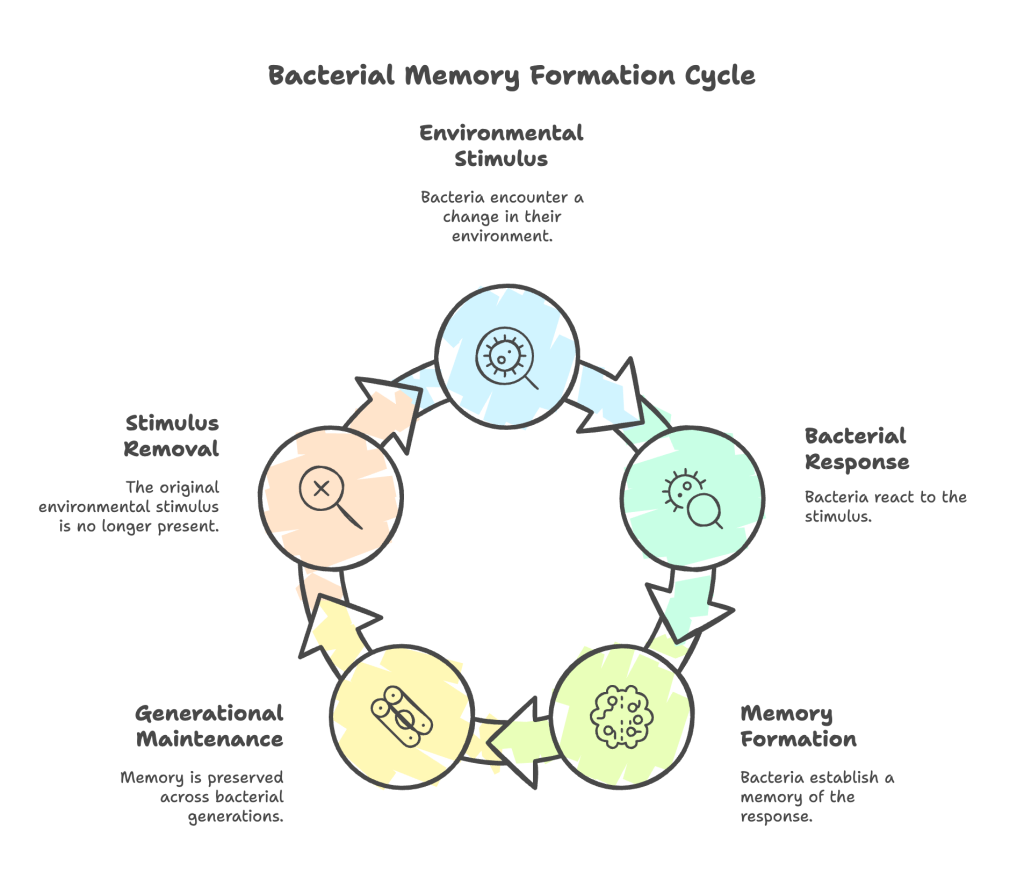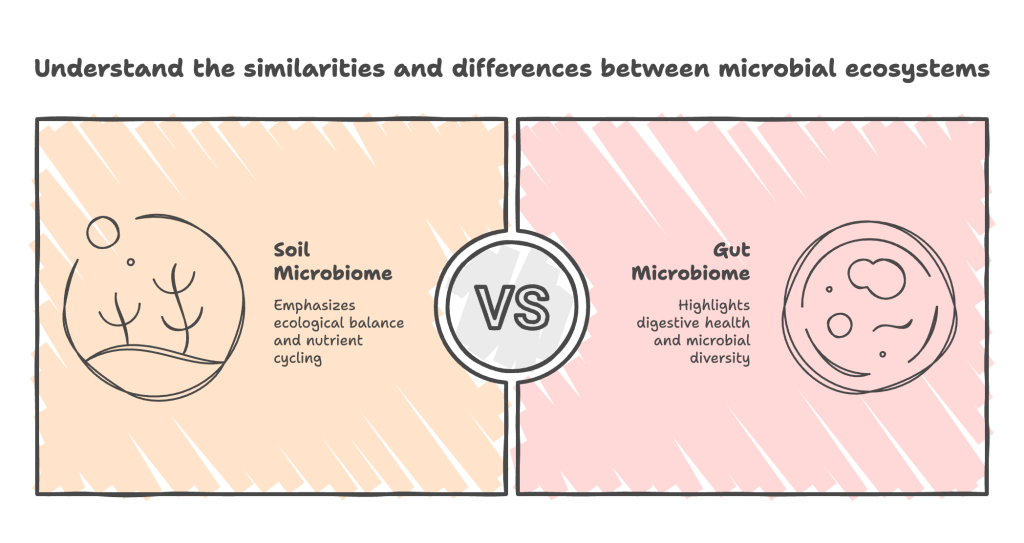Mastering the Art of Living Series
For centuries, we have viewed bacteria as primitive, single-celled organisms, invisible specks operating on the most basic stimulus – response mechanisms. This perspective has led us to underestimate what may be the most sophisticated intelligence system on Earth. Recent groundbreaking research reveals that bacteria are not merely reactive entities but thinking collectives capable of communication, complex decision-making, memory, learning, and even anticipating the future. This emerging understanding of microbial intelligence has profound implications for both environmental and human health, particularly regarding the parallel networks within soil ecosystems and the human gut microbiome. As we uncover the stunning capabilities of microbial communities, we are compelled to re-conceptualise our relationship with these microscopic allies that shape our environment, our health, and our consciousness.
Bacterial Communication: Visualising the Hidden Network

Redefining Intelligence in Microscopic Terms
Before exploring bacterial communication and decision-making, we must first reconsider what constitutes “intelligence.” Traditional definitions have been anthropocentric, focusing on brain structures and cognitive abilities unique to humans or vertebrates. However, contemporary science increasingly recognises intelligence as the capacity to:
- Process information from the environment
- Store and recall relevant experiences
- Make decisions that enhance survival and adaptation
- Anticipate and prepare for future conditions
- Coordinate behaviours within social groups
- Solve problems through flexible strategies
By these functional definitions, bacterial communities display remarkable intelligence—albeit operating on different scales and through mechanisms distinct from human cognition. As microbiologist Bonnie Bassler of Princeton University notes, “Bacteria can distinguish self from other, count their numbers, and modify their behaviour accordingly. They talk to each other with chemicals. They anticipate and prepare for the future. They make collective decisions.” Rather than dismissing these capabilities because they lack neurons, a more productive approach recognises them as parallel forms of intelligence that have evolved over billions of years – far longer than our own cognitive systems.
The Language of Bacteria: Chemical Communication Networks
Bacteria have developed sophisticated communication systems that allow them to coordinate actions across vast communities. This “bacterial language” primarily operates through chemical signalling molecules.
Quorum Sensing: The Bacterial Consensus System
The most well-studied form of bacterial communication is quorum sensing—a mechanism through which bacteria detect population density and coordinate collective behaviour. The process unfolds as follows:
- Secretion of Signalling Molecules: Individual bacteria constantly release species-specific autoinducers.
- Signal Accumulation: As the bacterial population increases, the concentration of these molecules rises.
- Threshold Detection: Once a critical concentration (a “quorum”) is reached, receptors on the bacterial cell surfaces detect the change.
- Coordinated Gene Expression: This detection triggers simultaneous changes in gene expression across the entire community.
- Unified Response: The community then exhibits coordinated behaviours such as biofilm formation, virulence activation, or bioluminescence.

Collective Decision-Making: Bacterial Democracy in Action
Bacterial communities make collective decisions that enhance survival and adaptation, often sacrificing individual interests for the benefit of the entire community. This distributed processing approach, rather than centralised control manifests in several key behaviours:
Biofilm Formation: Community Housing Decisions
The development of biofilms (structured bacterial communities embedded in self-produced protective matrices), demonstrates sophisticated collective decision-making:
- Initial Surface Attachment: Pioneer bacteria attach to a surface.
- Chemical Recruitment: Compatible community members are drawn in through chemical signals.
- Architectural Development: Specialised regions and functions evolve within the developing biofilm.
- Resource Allocation: Nutrient-sharing channels are established.
- Coordinated Defence: The community mounts a unified defence against antimicrobial threats.
Research from Harvard Medical School’s Roberto Kolter reveals that biofilm formation involves hundreds of precisely timed genetic switches activated in concert across millions of cells, creating functionally differentiated regions akin to tissues in multicellular organisms.
Beyond biofilms, bacterial communities demonstrate metabolic coordination and risk management by adjusting resource allocation and maintaining diverse responses to environmental challenges.
Neural-Like Pathways and Memory in Bacterial Networks
Recent discoveries reveal striking parallels between bacterial communication networks and neural pathways. Bacteria use electrical signalling via ion channels – a mechanism once thought unique to neurons, and exhibit forms of memory and learning, such as:
- Epigenetic Memory: Maintaining records of past conditions through heritable DNA methylation patterns.
- CRISPR-Based Memory: Recording viral encounters to create genomic “memories” of past infections.
- Behavioural Adaptation: Modifying responses based on repeated exposure to stimuli.

The Soil-Gut Connection: Parallel Intelligence Networks
Perhaps the most profound implication of microbial intelligence research is the striking parallel between soil microbial networks and gut microbiome communities. Both systems exhibit similar structural and functional characteristics:
- Physical Architecture: Complex three-dimensional structures with diverse microhabitats.
- Gradient Distribution: Chemical, oxygen, and pH gradients that create specialised niches.
- Resource Exchange: Sophisticated nutrient transportation networks.
- Biological Diversity: Integration of bacteria, fungi, archaea, and viruses into functional communities.
Research from the Earth Microbiome Project and the Human Microbiome Project indicates that, despite species differences, both soil and gut environments support similar functional groups of microbes. This reveals fundamental principles governing microbial organisation and underscores the co-evolution of these intelligent networks.

The Path Forward: A New Relationship with Microbial Intelligence
The study of microbial intelligence challenges us to re-conceptualise our relationship with the microscopic world. For too long, our engagement with microbes has been framed as warfare – relying on antibiotics, antimicrobials, and sterilisation. A paradigm shift towards partnership and facilitation is essential. By recognising that intelligence exists at multiple scales – from individual neurons to entire microbial communities – we embrace a unified understanding that dissolves the artificial boundaries between environmental and human health, soil systems and gut ecosystems, and individual and collective intelligence.
The Village of Peace “Mastering the Art of Living” collection includes apparel and products that celebrate the profound connections between soil health, the gut microbiome, and human consciousness revealed through microbial intelligence research. Explore the collection at villageofpeacedimona.com/shop.
References
Bassler, B.L., & Losick, R. (2006). Bacterially speaking. Cell, 125(2), 237-246.
Prindle, A., et al. (2015). Ion channels enable electrical communication in bacterial communities. Nature, 527(7576), 59-63.
Cryan, J.F., et al. (2019). The microbiota-gut-brain axis. Physiological Reviews, 99(4), 1877-2013.

